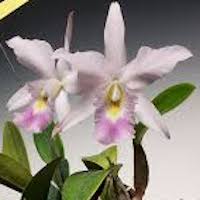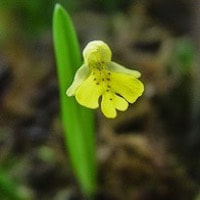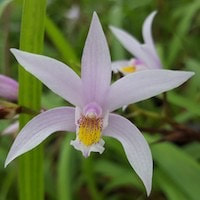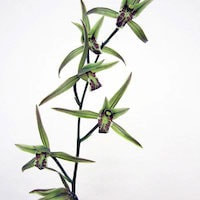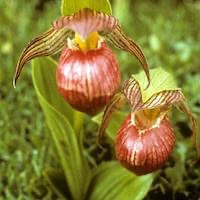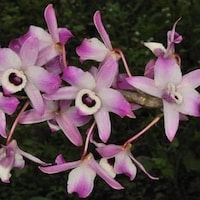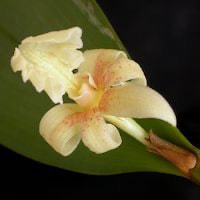Discover Oriental 10: The Ultimate Men's Fragrance
The Oriental 10 (Men) for Team building Perfume workshop presents a captivating fragrance blend featuring scented notes of native Singaporean orchids and therapeutic orchids, complemented by a combination of other aromatic elements:
- Native Singaporean Orchid notes:
- Laeliocattleya Twilight Song - A stunning blue form of a primary hybrid with large and fragrant flowers, characterized by pale blue lavender petals and sepals, and a darker blue lavender lip with veining. This orchid is a cross between C. walkeriana and L. anceps.
- Therapeutic Orchid notes:
- Amitostigma simplex - Found in western Sichuan and Southwestern Yunnan, this orchid is known as Huanghuawuzhu Lan (yellow flower no pillar orchid) and is listed on the IUCN Red List of Threatened Species. It contains compounds with potential skin whitening and antioxidant effects.
- Bletilla formosana - Also known as Taiwanbaiji, hyacinth orchid, or Chinese ground orchid, this orchid is used in Traditional Chinese Medicine (TCM) to strengthen the lungs, stop bleeding, and reduce swelling. It contains antimicrobial compounds.
- Cymbidium kanran Makino - A popular orchid among Chinese growers due to its elegant form and strong fragrance, this orchid is used in TCM to purify the heart, soothe the lungs, and treat coughs and asthma. Its roots are used to treat gastroenteritis and ascariasis.
- Cypripedium himalaicum Rolfe - Widely distributed in the Himalayas, this orchid is used in Chinese herbal medicine (CHM) to treat female infertility, hernia, waist pain, urinary issues, heart and lung diseases, and coughs.
- Dendrobium nobile Lindl. - An attractive epiphytic orchid with various medicinal compounds, it is used in CHM as shihu to alleviate dehydration, thirst, poor vision, and promote recovery after illness. It is also used in Japan and Korea to treat fever and night sweats.
- Dendrobium plicatile Lindl. syn. Flickingeria fimbriata - Known as Jibai, Jivanti, or Jivapatri in different regions, this orchid is used in Ayurvedic medicine and Sri Lankan traditional medicine for its tonic properties and aphrodisiac effects. It contains various alkaloids, phenanthrenes, and compounds with antioxidant activity.
- Other scent notes: The fragrance blend is further enriched with invigorating notes of aqua, lotus, Oud, oak, musk, bergamot, green melon, spearmint, berries, and peach, creating a refreshing and alluring aroma.
Other fragrance oils - Oriental 1, Oriental 2, Oriental 3, Oriental 4, Oriental 5, Oriental 6, Oriental 7, Oriental 8, Oriental 9, Oriental 10, Oriental 11, Oriental 12
Download the guided mediation that works best with this Orchid fragrance oil
| men_oriental_essential_oil_orchi_00010.mp3 | |
| File Size: | 115972 kb |
| File Type: | mp3 |
Therapeutic Blends for Men's Well-being
Contains Scented Notes of following in various proportions:
Native Singaporean Orchid notes: Laeliocattleya Twilight Song
|
Laeliocattleya Twilight Song - Used in Oriental 10 (Men) for Team building Perfume workshop
One of our favorite orchids in bloom. Laeliocattleya Twilight Song is a stunning orchid hybrid that captivates with its large and fragrant blue flowers. This hybrid is a result of a cross between two orchid species, Cattleya walkeriana and Laelia anceps, and was developed by Stewart Inc. in 1974. As a "primary hybrid," it inherits characteristics from both parent species, resulting in a unique and visually appealing orchid. Description: The flowers of Laeliocattleya Twilight Song are the highlight of this orchid. They are relatively large and emit a delightful fragrance. The best-quality blooms exhibit a pale blue or lavender color on their petals and sepals, with the lip of the flower being darker blue or lavender and often adorned with intricate dark blue veins. The combination of these colors creates a captivating and enchanting appearance that is highly prized among orchid enthusiasts. Parentage: The parent species of Laeliocattleya Twilight Song are Cattleya walkeriana and Laelia anceps. Cattleya walkeriana is a species native to Brazil, known for its compact size and beautiful flowers with various color forms, while Laelia anceps is native to Mexico and has vibrant purple or lavender flowers. Cultivation: Laeliocattleya Twilight Song, like other orchids, requires specific care to thrive and produce its magnificent blooms. It prefers bright, indirect light and a well-draining growing medium, such as a mix of bark and sphagnum moss. Adequate watering and humidity are essential for the orchid's health and flowering. Perfume Workshop Usage: Laeliocattleya Twilight Song's alluring fragrance makes it a fantastic addition to perfume workshops. Its floral and sweet scent with hints of blueberry or raspberry-like undertones can add depth and complexity to fragrance blends. Participants in the workshop can explore the art of perfume-making by incorporating this orchid's essence into their creations, resulting in unique and personalized scents. Conservation: With its striking appearance and pleasant fragrance, Laeliocattleya Twilight Song is a popular choice among orchid enthusiasts. However, it is essential to consider the conservation of its parent species, Cattleya walkeriana and Laelia anceps, as well as other orchids and their natural habitats. Many orchid species face threats such as habitat destruction and illegal collection, which can lead to their decline in the wild. Conclusion: Laeliocattleya Twilight Song is a remarkable orchid hybrid cherished for its large, fragrant, and aesthetically pleasing flowers. As a primary hybrid, it combines the best qualities of Cattleya walkeriana and Laelia anceps, resulting in a breathtaking floral display. Its delightful fragrance makes it an excellent addition to perfume workshops, allowing participants to craft unique and memorable scents. However, conservation efforts must continue to protect its parent species and other orchids, ensuring their survival for generations to come. |
Therapeutic Orchid notes:
|
Amitostigma simplex
Chinese names: Huanghuawuzhu Lan (yellow flower no pillar orchid) Amitostigma simplex, commonly known as "yellow flower no pillar orchid," is a beautiful and delicate orchid species found in the high-altitude regions of western Sichuan and southwestern Yunnan in China. This orchid is characterized by its yellow flowers and typically grows on grassy slopes at elevations ranging from 2300 to 4400 meters above sea level. Unfortunately, the species is listed on the 2006 IUCN Red List of Threatened Species, indicating that it is at risk of extinction in its natural habitat. Description: Amitostigma simplex is a small and charming orchid species that produces elegant yellow flowers. The plant has a slender and delicate appearance, with narrow leaves and thin stems. The flowers have a unique and attractive shape, adding to their overall appeal. Habitat and Conservation Status: The natural habitat of Amitostigma simplex consists of high-altitude grassy slopes in the mountainous regions of western Sichuan and southwestern Yunnan, China. The orchid thrives in these cool and elevated environments, often found in areas with adequate moisture and good drainage. Unfortunately, like many other orchid species, Amitostigma simplex faces threats to its survival. Habitat destruction due to human activities, such as agriculture, logging, and infrastructure development, is one of the major reasons for its decline. Additionally, illegal collection and over-harvesting for the horticultural trade also pose significant threats to the species. Conservation Efforts: Conserving Amitostigma simplex and other threatened orchid species is of utmost importance to protect biodiversity and maintain ecological balance. Efforts to conserve this orchid species involve various strategies, such as habitat protection, restoration of degraded areas, and raising awareness about the importance of orchid conservation. In-situ conservation methods aim to protect the orchid in its natural habitat by establishing protected areas and implementing regulations to prevent habitat destruction and illegal collection. Additionally, ex-situ conservation measures, like cultivating the orchid in specialized botanical gardens and conservation centers, can serve as a backup plan to ensure the survival of the species even if its natural habitat is lost. Substitution with Amitostigma pinguicula: Amitostigma pinguicula is another orchid species that shares similar characteristics and usage with Amitostigma simplex. As both species are similar in their properties, Amitostigma pinguicula can be used as a substitute for Amitostigma simplex in traditional herbal medicine or any other cultural practices. Conclusion: Amitostigma simplex, known as the "yellow flower no pillar orchid," is a stunning orchid species found in the high-altitude regions of China. Its beauty and uniqueness make it a valuable part of the natural ecosystem. However, its inclusion in the IUCN Red List highlights the urgent need for conservation efforts to protect this species from further decline. By implementing effective conservation strategies and raising awareness about the importance of preserving orchids and their habitats, we can contribute to the long-term survival of Amitostigma simplex and other threatened orchid species. |
|
Bletilla formosana
Chinese names: Taiwanbaiji (Taiwan Baiji), hyacinth orchid, Chinese ground orchid, white rhizome orchid, Xiao Baiji (Small Baiji) Japanese name: Shi-ran (purple orchid) Bletilla formosana, commonly known as Taiwan Baiji or Chinese ground orchid, is a medicinal plant with various traditional uses in Chinese medicine and other cultures. It is native to Taiwan and other regions in East Asia. The plant is highly valued for its medicinal properties and has been used for centuries in traditional herbal remedies. Description and Habitat: Bletilla formosana is a terrestrial orchid species with beautiful and showy flowers. The plant has fleshy, tuberous rhizomes and produces long, lance-shaped leaves. The flowers are typically purple or white and have a distinctive appearance, making them popular ornamental plants in addition to their medicinal uses. This orchid is well-adapted to its natural habitat and can be found growing in damp, shaded areas, such as forest floors or alongside streams. Traditional Medicinal Uses: In traditional Chinese medicine (TCM), Bletilla formosana is known for its medicinal properties. The stems of the plant are commonly used in TCM to strengthen the lungs, stop bleeding, and reduce swelling. It is often prescribed to patients suffering from conditions such as tuberculous cough, bronchiectasis, bleeding peptic ulcers, and nosebleeds. In India, the stem of Bletilla formosana is used to treat cracks on the heels. The plant has also been used in traditional herbal remedies in other cultures for various purposes, including wound healing and skin conditions. Phytochemicals and Medicinal Properties: Bletilla formosana contains various bioactive compounds that contribute to its medicinal properties. One group of compounds found in the plant is dihydrophenanthrenes. These compounds, including blestriarene B, have been studied for their antimicrobial effects. Research has shown that they exhibit activity against two pathogenic bacteria, Staphylococcus aureus (commonly causing skin infections) and Streptococcus mutans (associated with dental decay). The antimicrobial properties of Bletilla formosana make it a valuable plant for traditional medicinal practices, where it is used to combat bacterial infections and promote wound healing. Conservation Status: Due to its popularity and medicinal value, Bletilla formosana has faced threats from habitat destruction and over-harvesting. As a result, the plant's natural populations have declined in some regions, leading to concerns about its conservation status. To protect this valuable species and its natural habitats, conservation efforts and sustainable harvesting practices are essential. Conclusion: Bletilla formosana, or Taiwan Baiji, is a beautiful orchid species with significant medicinal value in traditional Chinese medicine and other cultures. Its stems are used to address various health conditions, and its antimicrobial properties make it useful in promoting wound healing and combating bacterial infections. However, due to habitat loss and over-collection, conservation efforts are necessary to ensure the long-term survival of this valuable plant species. |
|
Cymbidium kanran Makino
Local Name: Han lan (frigid Cymbidium orchid), winter orchid, Cao Lan (grass orchid) Cymbidium kanran Makino, also known as the frigid Cymbidium orchid or winter orchid, is a popular and magnificent orchid species among Chinese growers due to its elegant form and strong fragrance. It is native to regions in East Asia, including China, where it is highly regarded for its ornamental beauty and medicinal properties. Description and Flowering: Cymbidium kanran is a terrestrial or epiphytic orchid with long, strap-like leaves and tall flower spikes. The flowers are large and showy, often with vibrant colors and delightful fragrance. The plant typically blooms from August to January, with peak flowering occurring in December and January. The exquisite appearance and pleasant fragrance make it a favorite among orchid enthusiasts. Herbal Usage: In traditional Chinese medicine (TCM), various parts of Cymbidium kanran are utilized for their medicinal properties. The entire plant is believed to have benefits for the heart and lungs, and it is often used to "purify the heart" and soothe the lungs. The orchid is also employed to alleviate symptoms of coughs and asthma. Additionally, the roots of Cymbidium kanran are used in traditional herbal remedies to treat gastroenteritis (inflammation of the stomach and intestines) and ascariasis (an infestation of parasitic roundworms). The medicinal properties of this orchid are highly valued in TCM for their potential to promote respiratory health and aid in digestive issues. Cultural Significance and Horticultural Appeal: Cymbidium kanran is not only esteemed for its medicinal uses but also for its cultural significance and horticultural appeal. In Chinese culture, orchids have long been regarded as symbols of nobility, integrity, and friendship. They are often associated with elegance, grace, and enduring beauty. As a result of its popularity and beauty, Cymbidium kanran is widely cultivated as an ornamental plant, both in China and around the world. Its striking flowers and pleasant fragrance make it a favorite among gardeners and collectors of orchids. Conservation: Like many orchid species, Cymbidium kanran faces threats due to habitat loss and over-collection. In some regions, wild populations have declined, raising concerns about its conservation status. Sustainable horticultural practices and conservation efforts are essential to ensure the continued survival of this beautiful and culturally significant orchid species. Conclusion: Cymbidium kanran Makino, the frigid Cymbidium orchid or winter orchid, is a splendid and highly esteemed orchid species in Chinese culture. Apart from its ornamental appeal, it has been utilized in traditional Chinese medicine to promote respiratory health, soothe coughs, and treat digestive issues. Conservation efforts are necessary to protect this cherished orchid and preserve its beauty and cultural significance for future generations. |
|
Cypripedium himalaicum Rolfe
Chinese name: Xiaezhuo Lan (narrow calyx spoon orchid), Gaoshanshao Lan Nepali name: Khujukpa Cypripedium himalaicum Rolfe, commonly known as the narrow calyx spoon orchid or Gaoshanshao Lan, is a fascinating orchid species with fragrant flowers and broadly elliptic leaves. It is found in various regions, including the western Himalayas, Nepal, Bhutan, Sikkim, Tibet, and northern Burma. Description and Flowering: Cypripedium himalaicum is characterized by its distinctive uneven, broadly elliptic leaves and fragrant flowers with lips. The flowering season for this orchid species is from June to August in Nepal and from June to July in China. The beautiful and aromatic flowers add to its allure and make it an attractive choice for horticulture and traditional medicine. Traditional Medicinal Uses: In traditional Chinese medicine (TCM) and Nepali traditional medicine, Cypripedium himalaicum is used for its therapeutic properties. It is employed to treat various health conditions, particularly those related to women's health. The orchid is believed to have medicinal benefits for female infertility, and it is used to alleviate pain and discomfort in the waist area among women. In Nepal, the juice extracted from fresh plants or a drink made from dried plants is utilized for medicinal purposes. The orchid is also employed to address urinary issues such as difficulty in passing urine and urinary stones. Additionally, it is used to treat heart and lung diseases and coughs, indicating its diverse range of potential medicinal applications. Cultural Significance: Orchids, including Cypripedium himalaicum, have long been admired and revered in various cultures for their unique beauty and symbolic meanings. In Chinese culture, orchids represent refinement, elegance, and friendship. They are often associated with nobility and purity, making them highly valued and cherished. Conservation: As with many orchid species, Cypripedium himalaicum faces conservation challenges due to habitat loss, over-collection, and other human-related activities. In some regions, wild populations have declined, raising concerns about the conservation status of this beautiful orchid species. Conservation efforts are crucial to protect Cypripedium himalaicum and its natural habitat, ensuring that future generations can appreciate and benefit from its beauty and potential medicinal uses. Conclusion: Cypripedium himalaicum Rolfe, known as the narrow calyx spoon orchid or Gaoshanshao Lan, is a captivating orchid species found in the Himalayan region and surrounding areas. Apart from its aesthetic appeal, it holds cultural significance and is utilized in traditional medicine to treat various health conditions, particularly related to women's health. Conservation efforts are vital to safeguard this magnificent orchid and preserve its cultural value and potential medicinal benefits for the future. |
|
Dendrobium nobile Lindl. Syn Dendrobium lindleyanum Griff., D. coerulescens Lindl., D. formosanum Rchb. f.
Chinese names: Jinchashihu (gold hairpin Dendrobium), Meihuashihu (pretty flowered Dendrobium), Chunshihu (spring Dendrobium), Yunnanshihu (Yunnan Dendrobium), Diaolanhua (hanging orchid), Bianjincha (flat golden hairpin), Xiaohuangcao (small yellow herb); Dahuangcao (big yellow herb—its name in Guizhou Province); shek huk in Hong Kong. Japanese name: Koki-sekkoku Korean name: Go gwi seok gok Vietnamese names: Thach hoc, Kim thoa thach hoc, Hoang thao, kep thao, hoang thao cang ga, phi diep kep, co vang sao, se kep Thai names: Ueang Gao Giew, Ueang Khao kiu Dendrobium nobile Lindl., also known as gold hairpin Dendrobium, pretty-flowered Dendrobium, or spring Dendrobium, is a captivating epiphytic orchid species found in various regions of Asia. It has been given different names in different countries and is recognized for its aesthetic beauty and potential medicinal properties. Description and Habitat: Dendrobium nobile is an attractive deciduous epiphyte, meaning it grows on trees in sparse forests rather than in soil. It is well-known for its vibrant and alluring flowers, which add to its popularity as an ornamental plant. The plant is native to various Asian countries, including China (where it is called Jinchashihu), Japan (Koki-sekkoku), Korea (Go gwi seok gok), Vietnam (Thach hoc, Kim thoa thach hoc), Thailand (Ueang Gao Giew, Ueang Khao kiu), and more. Phytochemistry and Medicinal Uses: Dendrobium nobile contains several bioactive compounds, including dendroflorin, dendrobine, moscatilin, and ephemeranthol A, among others. These compounds are believed to offer various medicinal benefits. Dendroflorin, found in this orchid, has been shown to trigger embryonic lung fibroblasts to enter the S phase of cell proliferation, which supports cellular growth. It also aids in the degradation of reactive oxygen species (ROS), providing potential antioxidant benefits. Dendrobine, another compound in Dendrobium nobile, possesses slight pain-relieving and antipyretic properties, although it is milder than standard over-the-counter (OTC) painkillers and fever remedies. It has been found to raise blood sugar levels and, in higher doses, may impact cardiac activity, blood pressure, respiration, and uterine contractions in isolated guinea pigs. It selectively inhibits insulin-like growth factor-1 (IGF-1) in endothelial cells of the human umbilical cord and can inhibit HIV-1 replication through an NF-kappaB-dependent pathway. Moscatilin has shown potential antimutagenic activity, while ephemeranthol A is a potent inhibitor of nitric oxide and pro-inflammatory cytokine production. Traditional Medicinal Uses: In Chinese herbal medicine, Dendrobium nobile is the dominant species of "shihu." Traditional Chinese texts state that the pseudobulb of the plant benefits the stomach, encourages the secretion of body fluids, and reinforces the yin element. It is used to alleviate dehydration, thirst, and poor vision, and to promote recovery after an illness. In Japan, it is known as "Sek koku" and is used to treat fever, loss of appetite with nausea, and lumbago. In Korea, it is called "Seok gok" and is used to address night sweats. The World Health Organization (WHO) has recognized Dendrobium nobile as an important medicinal plant in its publication "Medicinal Plants of China." Conclusion: Dendrobium nobile Lindl. is a captivating orchid species found in various Asian countries. It is esteemed for its aesthetic beauty and has been used in traditional medicine for its potential health benefits. With its rich phytochemical composition, including dendroflorin, dendrobine, moscatilin, and ephemeranthol A, this orchid holds promise for further research and exploration of its medicinal properties. As with all medicinal plants, proper scientific investigation is essential to ensure its safe and effective use. |
|
Dendrobium plicatile Lindl. syn. Flickingeria fimbriata (Blume) A.D. Hawkes; Dendrobium macraei Lindl.,
Indian Names: Jibai, Jibanti in Bengal, Jivanti, Radarudi, Wajhanti (Gujerati), Jiban, Joivanti, Sag (Hindi), Jivanti (Marathi), Bhadra, Jiva, Jivabhadra, Jivada, Jivani, Jivaniya, Jivanti, Jivapatri, Jivapushpi, Jivavardhini, Jivarisha, Jivdatri, Jivya, Kanjika, Kshurajiva, Madhushvasa, Madhusrava, Mangalya, Mrigaratika, Payaswini, Praanada, Putrabhadra, Ratangi, Shakashreshtha, Shashashimbika, Shringati, Srava, Sukhankari, Supringala, Yashaskari, Yashasya (Sanskrit), Saka (in Orissa), pourusha rathna or purusha ratana (Kan- nada), Swarn (Uttar Pradesh) Ayurvedic name: Jeewanti in Sarangadhara Sanghita. Sri Lankan name: Jata makuta Chinese name: Liusu Jin Shihu (Tassels gold Dendrobium) Chinese medicinal name: Youguashihu Dendrobium plicatile (syn. Flickingeria fimbriata) and Dendrobium macraei are orchids with various traditional names in different regions, including India, China, and Sri Lanka. Both orchids have significant phytochemical compounds and are used in traditional medicine for various purposes.
Herbal Usage: In traditional medicine, D. plicatile is considered cold, mucilaginous, and light. It is used as a tonic and is believed to support the bile, blood, and phlegm disorders. It is commonly used in decoctions with other plants with similar properties. In West Bengal, it is sold as Jibanti and is used in Rasayana therapy. Ancient Sri Lankan writers described it as Jeevaniya (supporting life) and saaka shreshtha (best of herbs).
Herbal Usage: Specific traditional medicinal uses for Dendrobium macraei were not mentioned in the provided information. It is possible that it has similar uses to other Dendrobium species due to the presence of similar phytochemical compounds. Both Dendrobium plicatile and Dendrobium macraei are valued for their medicinal properties and are used in traditional medicine for different health conditions. However, it's essential to note that while traditional medicine practices have historical significance, the safety and efficacy of these orchids for medicinal purposes require further scientific research and validation. Always consult a qualified healthcare professional before using any plant or herbal remedy for medicinal purposes. |
Other scent note
Aqua, lotus, Oud, Oak, Musk, Bergamot, green melon, spearmint, berries and peach
Scentopia Library Reference ingredient
Cinnamon - Sir Raffles Collection- Check details at Scentopia's scent library
Join Scentopia's wonderful orchid scent crafting, fragrance tour, bridal shower or corporate team building which includes perfume making onsite and offsite, beach activities and more. We also serve primary school learning journey, secondary students and pupil on industrial excursions. Know more about our orchids perfume bar or therapeutic orchid scents and other wellness aromas. Conatct Perfume workshop or book a scent crafting session here.
